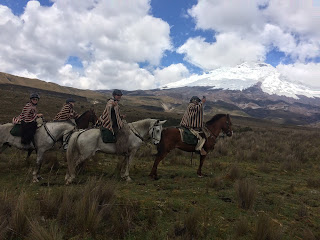
Today's lesson is altitude and atmosphere...
Air gets 'thinner' as altitude increases, right?
Bogota is one of the highest cities in the world (Denver's at 5,300 ft. Bogota's at 8,300 ft / 2,500 meters.) Check out the graph from Wikipedia...
Bogota has about 77% of the air that Miami has.
When we first got here, we were huffing and puffing. Climbing a stair was challenging.
Luke pointed out that soda pop was really fizzy.
#1.
I went on flight from high Bogota (8,300 ft) to the coast (0 ft). I started with a plastic water bottle filled with air. (Now class, Keep in mind that this air is at Bogota's lower pressure.)
When the plane landed near the coast (altitude ~0 ft), this is what the bottle looked like (below). Crushed.
The more dense air at the coast (outside the bottle) squeezed the less dense air inside the bottle until the air inside and outside were at the same pressure. (When the pressures were different from each other, the walls would be moved by the difference. And, they were!)
This is the same sort of thing that happens to your ear drums when your ears 'pop' in a plane or tall elevator. A pressure difference builds up across your eardrum, and your eardrum bends, until either:
1) you clear your ears and relieve the pressure difference (which usually happens naturally when you yawn), or
2) Your eardrums explode.
But is this case, we just measured the volumes of air that were in the bottle before and after the compression. Without compression...600 ml. With compression...about 440 ml.
Ratio With/Without = 440/600 = 73%. Which isn't too far away from the prediction of 77%
(Bonus question: How can you measure the 440 ml volume of the compressed bottle?
Post your answer on this blog below.)















































